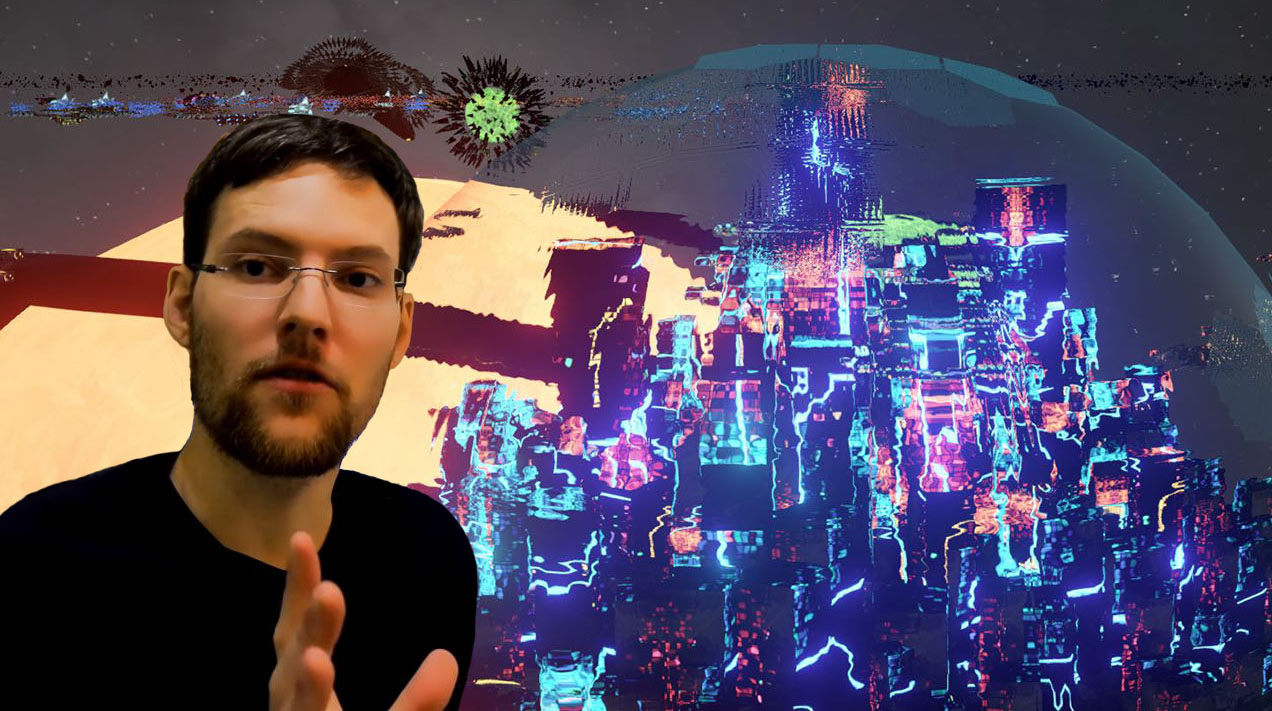
In many ways, Arcen Games represents the reason why I’m so passionate about indie developers. This small company has been around since 2009, and consistently produces bizarre games that, admittedly, can be pretty hit or miss. But, when Arcen scores a hit, they produce classics like AI War and The Last Federation, two of the best and most unique strategy games the PC platform has to offer. Even when Arcen swings a miss, they still manage to produce a genuinely unique experience that you can’t really get anywhere else on the market.
I interviewed Chris Park, the founder of Arcen Games, several years back on an extremely obscure indie-focused game site that no longer exists. Now that AI War 2, the highly anticipated sequel to Arcen’s most popular game, has just entered Steam Early Access, I felt that it was time to catch up and introduce this niche developer to the Niche Gamer audience.
You can read my full interview with Chris Park below:
Niche Gamer: Why don’t you tell us a little about yourself and Arcen Games.
Chris Park: I was a business programmer for 8 years prior to founding Arcen, which I had never planned on founding. Game design was a lifelong hobby of mine, but I never thought it was a viable career. I knew that the industry hours were terrible, and going it alone wasn’t really a thing. I was still making games in my spare time, however, because that’s just what I liked to do. In 2008, I started working on a game I called AI War, which was basically an RTS game that I could play co-op with my dad, uncle, and one of my uncle’s friends.
We had been playing Supreme Commander and Age of Empires 3 each week (after a decade of bouncing between RTS games), but had gotten tired of trouncing the AI in those. We don’t care for PVP, and the options for co-op strategy games were limited. Basically by the time we really learned a game well, the AI stopped being any match for us even on the cheaty difficulty levels.
So I figured I’d make my own. And I did. It was by chance that it happened to be ready right around the time of the indie “scene” starting to be a thing, and AI War was one of the first 80 games on Steam. Things went well from there, I resigned from my job as CTO of another small company, and I’ve been working my dream job ever since. Boy is a tough one.
What’s your quick pitch of AI War to someone unfamiliar with the series. What is it? What makes the series unique?
AI War is a PVE singleplayer or co-op RTS game against a huge and inhuman foe that has already conquered the galaxy. It uses different rules and resources than you, and the only reason you aren’t dead is because it doesn’t really care. You go about your business trying to take it down over an epic campaign on a large galaxy map, and each victory you claim makes it care just a bit more. Make it care too much, too soon, and you’re dead — so it’s very much a matter of being smart with where you choose to exert force, rather than just exerting force somewhere because you can.
What new features, mechanics, and other changes can fans of the original AI War expect from the sequel?
We didn’t bring over any of the old engine the original was running — it had truly run its course over 6 expansions, and we did all we could with it. So, starting from scratch, we’ve built something a lot more robust that allows for way more to be going on in a galaxy than ever before. All sorts of new factions have already been added, ranging from the nanocaust that slowly takes over ships, to human marauders that can conquer the galaxy on their own if you’re not careful. But the framework we’ve created allows for basically the sky as the limit.
It’s hugely multithreaded to take advantage of modern computers, and so the AI is able to be extremely smart without you needing to have a supercomputer. The interface is much better, the graphics and audio are better, the ability to mod has been added in a very robust fashion, and the game mechanics have been heavily revised to be easier to grasp but no less deep.
In short, it’s basically a generational leap forward, based on all the things we wished we could do but that the first engine was blocking us from.
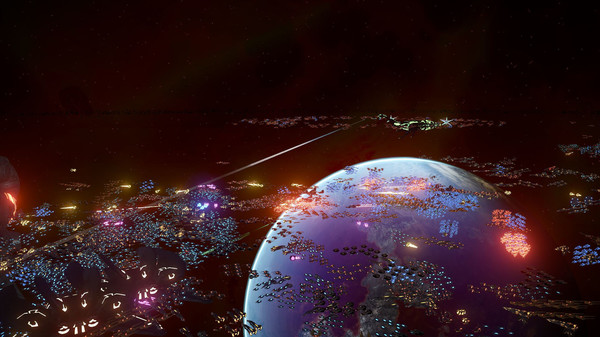
What is the state of the Early Access version? What are the current features and mechanics, and how much needs to be added before the final release?
It’s fully playable from start to finish, and there are a few hundred ship types in there. We plan on adding more ship types and ship mechanics because we want to, and because that will compare more favorably with the first game WITH all six of its massive expansions. The sequel is already much bigger than the first game without expansions, but that’s not really our benchmark.
A lot of the UI is final or near final, but there are still more quality of life improvements that we need to hash out with players, and there are a couple of areas of the UI that are very temporary right now. Actually, just mainly one: the lobby. It’s atrocious, but you can skip it by using Quick Starts instead (which would be advised for new players even if the lobby was perfect).
We also don’t support multiplayer just yet, because over the last two years of making this game, we went through many extensive prototyping periods that kept changing game and engine mechanics. It was wasteful to keep multiplayer fully functional through all that, and we didn’t have anyone interested in testing multiplayer at the time, so we turned that off earlier this year. We’ll get that ball rolling again most likely in January.
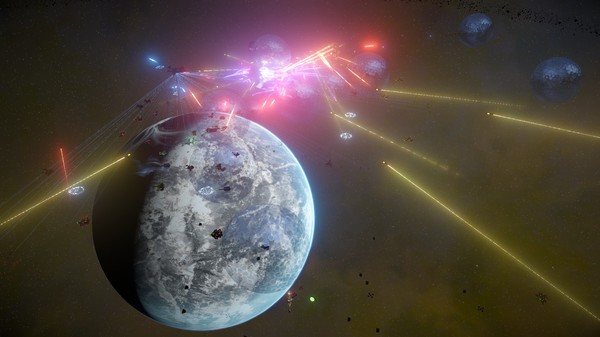
The original AI War received new expansions and patches for many years after release. Will AI War 2 get the same long-term support post-launch?
I certainly hope so! The big limiting factor with the first AI War was its engine. I didn’t set out to make a game remotely so long-lived as the first one turned out to be. We had to reinvent many parts of that engine multiple times over the years. But eventually we just hit a point where all the interesting things to do were not possible, so we moved on from that in 2014.
With AI War 2, it is from the ground up meant for massive amounts of content, total conversion mods, and whatever else people want to do. If we aren’t able to make a lot of really cool expansions over the next 5 or 6 years, it would be because the market isn’t interested in that, and that would be a huge disappointment to me personally. I really look forward to being able to go crazy with some of the new capabilities we have.
Fortunately, if this first day of sales in Early Access is any indication, the interest in the game is very high (it has been in the top 10 sellers in the US and Europe almost continuously, not that I expect that to continue for much longer). So I’m very hopeful on that front.
Are you worried that the sheer amount of content in the first game might dissuade some early adopters of the sequel?
I was worried about that for a long time, to be honest. The first game is so incredibly massive that no other title can really come close in this corner of the genre right now. So it seemed like a case where we were setting ourselves up to fail.
As time has passed over the last two years, we’ve focused on things that just could not be done in the original engine, while at the same time re-implementing all the core things people expect. The new factions are so robust and complex compared to what the original was able to offer, and really we’re only scratching the surface of what is possible so far. I think that these wind up making the game feel like such a more vibrant experience, that hopefully it is an irresistible improvement for players of the first game.
We still have more to do between now and 1.0 to get to what I would consider “parity plus some,” but even now you could easily sink a hundred or two hundred hours into it and not be in repetitive situations. The first game had hardcore fans with 600+ hours, and I don’t think the sequel will take anywhere close to 6 expansions to get to the point where that’s possible.
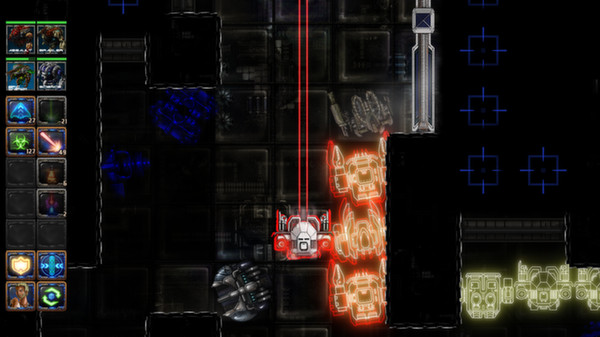
Is there a previous Arcen title that you’d really love to expand into a massive sequel along the lines of AI War 2?
Honestly? While I love the giant scale of AI War 2, games with giant scope kind of scare me at the moment. I want to keep making AI War 2, plus some expansions for it, for the next few years. And I want to work on some smaller titles in between those expansions. It’s much less disastrous to fail when the title is smaller, and I can be a lot more adventurous without it having to be something that my entire financial fate rests on.
I do keep thinking how nice it would be to remake Bionic Dues in 3D with more vibrant art and a different name, though. The name really holds that one back, as does the really dark art that was needed so that the units would stand out enough. But when I start thinking about that too much, I then start thinking of all sorts of changes and deviations I’d like to make, and it really starts becoming “loosely inspired by” the first game instead of a true sequel; rather like A Valley Without Wind 2.
Back when we last talked, Arcen’s next big upcoming release was a sci-fi 4X game called Stars Beyond Reach. Unfortunately, that game ended up falling through, and is now on “indefinite hold.” What exactly happened?
The easy joke answer, which also happens to be true, is that it was “beyond reach.” Basically, the game was extremely massive in scope by basic definition (most 4X games are), and at the same time I was trying to have some core mechanics that were very different from other games and thus required a lot of prototyping. After spending a ton of time on that, and north of $430k, we hit a point where it was clear my ideas were better on paper than in practice.
There’s a lot of good stuff in that game, but there are some fundamental flaws that I still can’t figure out how to deal with. Since I was not confident that I could figure those issues out, or that people would be happy with the solutions I came up with if they bought it when it worked a different way, we never put it on sale. We had over 100 testers from our community, but rather than risk disaster in the market with Arcen’s reputation potentially being damaged, I decided to set it aside. Better to be sure about a product before putting it out even into Early Access.
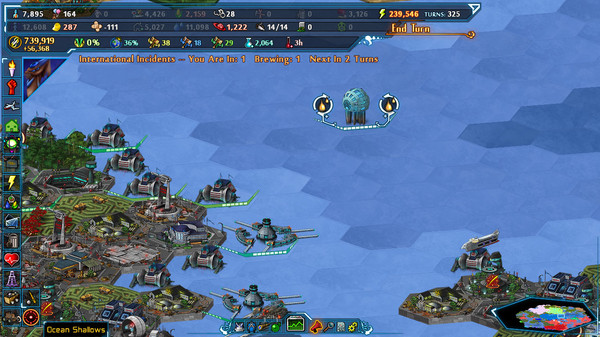
Looking back, do you think that you could have done anything differently to save Stars Beyond Reach?
At core, I could have just copied other 4x games more. That would have led to substantially more security that the game would be understandable and baseline fun. I probably should have done that.
Ultimately I was trying to make something that was a mashup of SimCity in construction, Risk in combat, Civ 5 in techs and perks, The Last Federation in diplomacy, and Dwarf Fortress in emergent storytelling. That was just… too much to chew. The SimCity construction worked well. Risk combat was… okayish. The Civ tech and perk elements were really, really good. We never got to do much with the diplomacy, but it would have been at least okay. And we did have a lot of Dwarf Fortress style of storytelling, but it was too distant and too detailed at the same time. That was probably the biggest challenge of all.
All in all, things just never really meshed fully. If I’d just taken combat directly from games like Civ, that would have been much safer to do. Not trying to include emergent storytelling so much would have also been far safer. Then it would have been basically “Civ with better diplomacy and SimCity-style construction on hexes.” I think that would have been really fun.
Do you see Arcen ever revisiting the game and it’s ideas in a different way?
Maybe. I’m still a little shell-shocked by it. It’s been over 3 years since we switched away from it, and I’m still antsy about it. I could see the scaled-down version I mentioned above being something that we do, but given how much of a change that would be I’d be tempted just to start fresh with the new AI War 2 codebase and build up from that instead of from the SBR code.
I still really want to do that sort of Dwarf Fortress style of emergence, but the game that is really nailing that right now is Rimworld. That game is a bit on the grim side for a lot of my tastes, and I’d prefer that some of the interaction mechanics were a little simpler, so my take would be pretty different from either of those games. To some extent, Skyward Collapse was my first foray into that type of idea, back in 2013. The woes and other things that happen were something inspired by DF. And the emergent narratives that you get with The Last Federation, while distant instead of based around individuals, are something that please me to no end.
So the ideas have been knocking around in my head for a long time, and I think I tried to do too much of them all in one game. One way or another, eventually those ideas will come out.
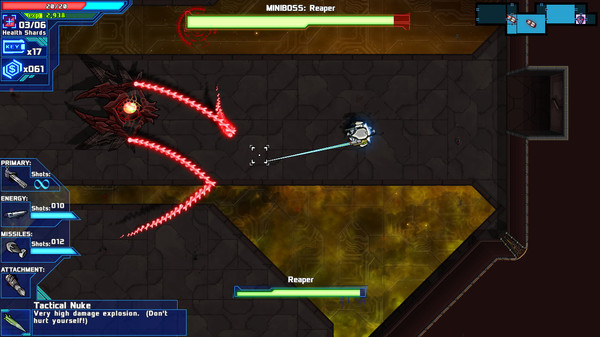
As an indie developer that was on Steam prior to the advent of Greenlight and Steam Direct, how have these two initiatives by Valve affected your visibility on the platform now that so many games are getting released every day? Have you seen a significant impact on sales and discoverability?
Oh yes, it’s been a nightmare. Round about 2015 or 2016, I can’t remember which year, our income fell to 1/3 its prior amount and has never recovered. That seems to have been the norm for all indies, except if you get on the top sellers list.
Right now we’re sitting very high on the top sellers list, so things look quite good, but largely that is thanks to our existing audience coming in and buying it and thus us showing up high on the sales charts, which in turn feeds back into more new people seeing it and coming in. It’s a positive feedback loop that is benefiting us greatly right at the moment I’m talking to you. But that’s still playing with fire.
For our most recent game prior to this one, Starward Rogue, that’s a game that in its whole first two years of life has earned only about twice what AI War 2 has in its first day on Steam. It’s a more niche game style in that it is SHMUP roguelike, but it still just never has caught on as it seems like it should have. If it had a few more reviews, it would be sitting at Overwhelmingly Positive. But since it doesn’t line up with our existing customers’ interests too heavily, that means that there was no positive feedback loop in the store, and the game just kind of exists.
We have folks on our team who still update it lovingly, and people who enjoy playing each update when it comes out. But it was never a financially viable game; in the 2016 market, it was dead meat, but in 2013 or 2014 it probably would have been our top seller.
Or maybe not. Luck plays a factor, and there may be some element to the game that makes it not do as well that I’m just not seeing. But nonetheless, the market has been very challenging for a couple of years now, and so I’ve been very anxious about the Early Access launch of AI War 2. This is our 12th full game, and yet I still felt like I had no idea what to expect. Fortunately everything has been coming together really well so far, knock on wood. I’m really proud of this game, so I’m glad.
Are there any features or ideas that you think Valve could implement to improve visibility for indie developers and their games on Steam?
I think that white label stores, aka curated storefronts managed by third party partners to Valve, would be really excellent. The idea is that someplace like Eurogamer can set up “the Eurogamer store,” or something along those lines. They get a 10% cut, 5% out of the developer’s pocket and out of Valve’s, and they manage the descriptions, categorizations, and exactly what games are included. It’s like the curator pages, but with unlimited numbers of games, better organization and curator branding, and a cut to the curator so that they have an incentive to really keep it nice.
That would particularly let communities around specific types of games really flourish. Right now everything is too monolithic and centralized.
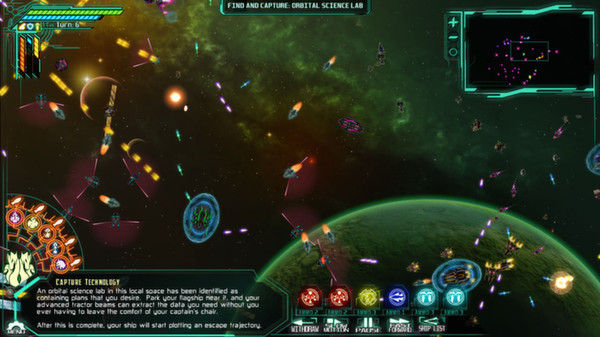
Obviously Steam is the biggest PC games platform, but what’s your experience like on other digital storefronts like GOG?
It’s been extremely positive. I hope to be working with GOG soon with AI War 2. They carry the original, as well as some of our other titles, and they’ve been by far our #2 platform. I used to really like working with Stardock’s Impulse before GameStop bought them out and then ran it into the ground. Humble have been amazing partners ever since they existed. GamersGate and GreenManGaming have been steady presences over the years.
There have been a few dozen others we’ve worked with over the years. Every so often, at least twice a year these days, I’ll get a bankruptcy notice from some law firm noting that some storefront went down and they might owe me a little money and do I want to file a claim against them. That’s always sad to see, but it’s a tough market for startup storefronts, too.
Thanks for your time!
AI War 2 is now available on Windows PC, Mac, and Linux via Steam Early Access for $19.99. While you’re at it, be sure to check out some of Arcen’s other games.